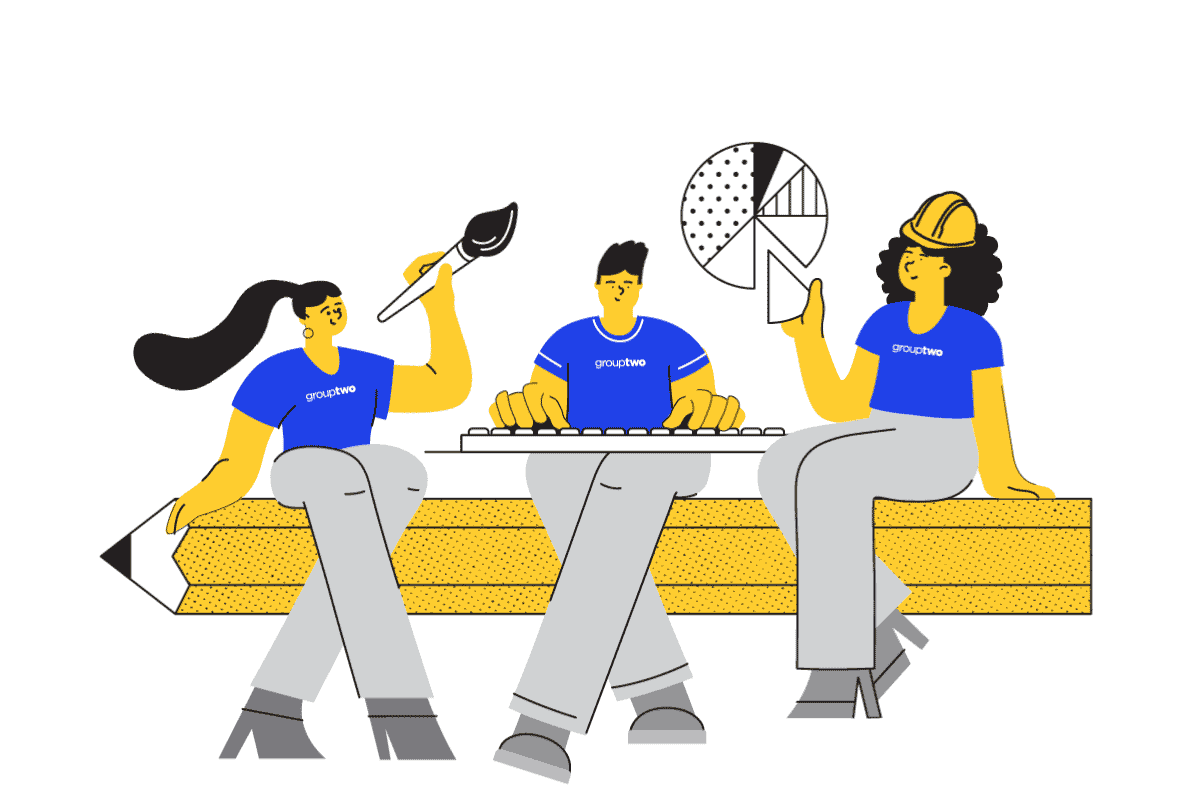Hi, builders! Welcome to our discussion on all things digital. You already know how big of a role your digital ad campaigns play in your sales, but are you up to date on the latest ad services and tactics? If not, you’ve come to the right place. Our digital experts broke down everything you need to know about creating and maintaining a fortified digital strategy to ensure success:
- Do you know what Smart Bidding is?
Smart Bidding is a subset of automated bid strategies that use machine learning to optimize for conversions or conversion value in each and every auction—a feature known as “auction-time bidding.”
Benefits:
- Advanced machine learning = better results: In bidding, machine learning algorithms train on data at a vast scale to help you make more accurate predictions across your account about how different bid amounts might impact conversions or conversion value. These algorithms factor in a wider range of parameters that impact performance than a single person or team could compute.
- Wide range of contextual signals = leverage more of Google’s data: With auction-time bidding, you can factor in a wide range of signals into your bid optimizations. Signals are identifiable attributes about a buyer or their context at the time of a particular auction. This includes attributes like device and location, which are available as manual bid adjustments, plus numerous additional signals and signal combinations exclusive to Smart Bidding.
Simply put, this results in a lower cost per lead and more qualified online traffic.
- Do you know what Discovery Ads are?
Discovery Ads are both a brand new Google Ads campaign type, and an ad format. They’re designed for “discovery” as users browse their content and feed-based experiences on the Google Search mobile app, YouTube feed, and Gmail. They’re used to fill the top of your funnel or re-engage with remarketing.
- Do you target competitors on Google Maps?
To enable Google Maps to show your search ads:
- Enable location extensions for your Google Ads account.
- Set up or update your Google My Business listing. If you don’t have a Google My Business listing yet, set one up. If you already have a listing, make sure your information is accurate.
- Use location targeting and bid by location. Target a specific location and set bids by location, so that your bids increase for buyers located near your business.
- Optimize your keywords. Use keywords in your campaigns that relate to your location and what buyers are searching for locally, such as other builders (your competitors) in your area.
- Do you know what attribution model your Google Ads campaigns are using?
On the path to purchase, buyers conduct multiple searches and interact with multiple ads from the same advertiser. Attribution models let you choose how much credit each ad interaction gets for your conversions.
Attribution models can give you a better understanding of how your ads perform and can help you optimize across conversion journeys.
Google Ads offers 6 attribution models:
- Last click: Gives all credit for the conversion to the last-clicked ad and corresponding keyword.
- First click: Gives all credit for the conversion to the first-clicked ad and corresponding keyword.
- Linear: Distributes the credit for the conversion equally across all ad interactions on the path.
- Time decay: Gives more credit to ad interactions that happened closer in time to the conversion. Credit is distributed using a 7-day half-life. In other words, an ad interaction 8 days before a conversion gets half as much credit as an ad interaction 1 day before a conversion.
- Position-based: Gives 40% of credit to both the first and last ad interactions and corresponding keywords, with the remaining 20% spread out across the other ad interactions on the path. This is the strategy Group Two recommends for most campaigns.
- Data-driven: Distributes credit for the conversion based on your past data for this conversion action. It’s different from the other models in that it uses your account’s data to calculate the actual contribution of each interaction across the conversion path. Note: This is only available to accounts with enough data.
- Do you know what Responsive Search Ads are?
Responsive search ads let you create an ad that adapts to show more text—and more relevant messages—to your buyers.
Benefits:
- Create flexible ads that adapt to different device widths, giving you more room to share your message with buyers.
- Allows you to let Google Ads show the most relevant combinations to your buyers. You can tailor your headlines and descriptions to your buyer’s location or area of interest.
- Reach more buyers with multiple headlines and description options that give your ads the opportunity to compete in more auctions and match more buyer search queries.
If you’re ready to drive more conversions and sales from your digital ad campaigns, our digital experts will help you get there. Feel free to reach out to us! We can’t wait to get started.

